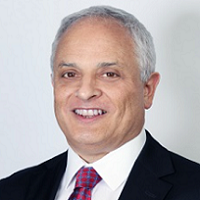 By Jeff Robbins, CEO, LiveData
By Jeff Robbins, CEO, LiveData
LinkedIn: Jeffrey (Jeff) Robbins
LinkedIn: LiveData, Inc.
Over the past four years, the healthcare industry has experienced an explosion of data and analytics. Whether it comes from an Apple Watch or a hospital room, patient data is collected nonstop. But we can still unlock the value inherent in this treasure trove of information — especially as AI becomes an increasing part of the equation.
Because of security and privacy restrictions governing patient data, imposed by regulations like HIPAA, healthcare decision-makers remain a bit constrained. The move to the cloud has been slow, as the migration of so much patient data while working in dynamic environments seems overwhelming. As much as administrators want to enable physicians and staff to do their jobs better with current and accurate data, the task of changing systems can seem aspirational. But movement is happening, simply because it must.
Hospitals, for instance, are being forced to do more with the resources they have. The ever-persistent nursing shortage has become more than a bottom-line financial burden — it hits at the heart of delivering care. Moving actionable analytics to the cloud gives hospital administrators the platform to improve many factors in a nurse’s workplace, such as optimizing his/her schedule for limited downtime or ensuring he or she gets a lunch break or can leave on time at the end of a shift. Maybe it means keeping the nurse with a steady team, focused on their core competencies, so that they are assigned to the cases and the team best equipped to help patients. These are elements that contribute to job satisfaction and, critically, retention. This is just one example where live data that can be shared across systems and departments makes a difference.
Consider what goes on in the operating room, where teams must make immediate decisions based on what is happening on the table. Without real-time information that can be shared with the team members and stakeholders both inside and outside the room, risk is elevated. Care team members cannot fully monitor and assess changes or account for meaningful differences between patients. Not only this, but facilities and equipment are not leveraged to their fullest, which means more patients are forced to wait for care.
Additionally, by failing to fully prepare for risks, organizations operate behind the curve as compared to their peers and competitors who utilize the kinds of cloud-based systems available today to enhance their workplaces, keeping pace with the heightened expectations of today’s (and tomorrow’s) workforce — as well as the patients that rely upon them.
Adopting purpose-built, cloud-based software addresses these and so many other issues plaguing healthcare. The technology exists to advance care while easing the burdens on healthcare workers and improving the experience for all. We just have to take the leap forward. Like going through surgery, it is a serious decision to take, but the outcome is worth it.
